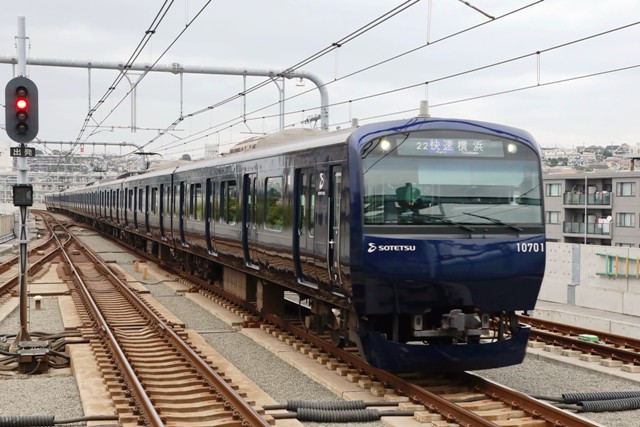 |
| Set 8711 of the EMU Sotetsu 8000 series arrives at Izumino-chuo station |
After all the EMU 7000 series trains' retirement in November, 2020, the EMU 8000 series became the elder group of trains on the Sagami Railway (Sotetsu). Today, let me update on how the 8000 series is going.
In the first place, retirement of the 8000 series has started one by one. 4 sets, 40 cars in total, have already disappeared from the track. These 8000 series trains have been replaced by the new models, namely the 12000 and 20000 series. Sotetsu plans to decommission a total of seven sets (set 8701 to 8707) of the 8000 series within a few years. The next generation is already gaining power.
Secondly, the renovation of the 8000 series has started in parallel. Set 8709 became the first renovated 8000 series train. Its body color was changed to "Yokohama navy blue". The position of the front light was moved from the lower to the upper part. The passenger seats were also changed. The trains that the renovation applies to are 6 sets (set 8708 to 8713), which were built after 1994.
For your information, the 8000 series was commissioned in 1990. 13 sets, 130 cars in total, were built by Hitachi from 1990 to 1999. As a rail fan, I like the 8000 series because there are cross seats in the train. Although it's a commuter train, we can enjoy the atmosphere of the holiday tour sitting in the comfortable cross seats. It's a brief refreshing time for busy urban commuters.












